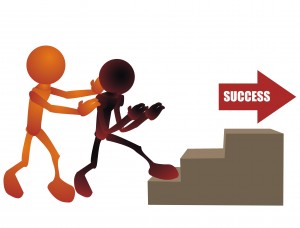You have invested time and money in SEO (search engine optimization), listing your website locally, pay-per-click and maybe even TV and radio ads. You notice the amount of visitors to your site has increased, but sales haven’t. Sound familiar?
Have you ever been to a grocery store and noticed an abandoned shopping cart, full of groceries including sweaty milk and melting ice cream? In the grocery business, that’s called a “shop-back cart”. The same thing happens online too. Why do you think customers would leave?
Website conversion optimization is the science of turning website visitors into customers. Many times, the sales path is cluttered and it’s like guess work to find the check-out. Other times, there could be things in your customer’s shopping experience that seem sketchy to them and they abandon their shopping cart just like they do at a brick & mortar store.
Here are some top reasons why an online customer might leave in the middle of a purchase:
- Page load speed – 47% of consumers expect a webpage to load within two seconds. After that, the abandonment rate increases 6.7% per second ¹. Make sure your webpage is optimized, pictures are compressed and file sizes are small so your webpage loads fast.
- Simple layout – A cluttered website can confuse a buyer on the path they have to follow to complete a purchase and find the information they want. Keep the layout simple and clean. Whitespace can be your friend. Also, make sure the flow is easy to follow and the call to action or button to buy is prominently displayed.
- Quality images – You never get a second chance at a first impression. Poor images that are out of focus, pixilated or that don’t match the description or title, don’t speak well to customers about your image and brand. Make sure they are sized properly, compressed, cropped and are well lit. Pictures can say a thousand words, when done well.
- Reviews & social media – 59% of shoppers said they used reviews to make buying decisions ². Many sites like Google, Yahoo! and Yelp have reviews for your business. Be sure to make it easy for your customers to leave reviews and share your business and products through Facebook and other social media sites by adding link buttons and widgets. If you get a bad review, there are ways to leave a response to it so you show potential customers that there was an explanation to what happened or that you’re making changes to improve.
- Trust & reassurance – without your product being physically present, shoppers may have doubts about credit card security or customer support if something goes wrong. Display a security seal on your website, along with accepted payment methods. Post your return policy and make it easy for the customer to return something if they’re unhappy. List a customer service phone number or have a help desk or live chat for customer support.
If your website’s call to action is to simply fill out a form, so a sales representative can reach out to a potential customer and ultimately close the deal, here are some tips to help with that:
- Quick follow-up – be sure to respond right away to questions from your online form – wait too long and the customer may go elsewhere. Many forms have the ability to notify you via email or text that a new inquiry has been sent. Follow-up is best to do over the phone so you can answer questions, set an appointment or close a sale real time verses back and forth through email. Don’t give your competitor the opportunity to take away your sale!
- Sell benefits – educate your customer on the BENEFITS of what it is that you offer – benefits are what the customer gains by using your product or service – “what’s in it for me”. With benefits you will get them emotionally engaged and excited.
- Solve Problems – Identify problems your customer is dealing with and propose solutions. The problem should be one the customer sees value in solving. To find out what the really difficult problems are, ask the right questions and listen before acting.
- Unique Selling Point (USP) – What do you have that your competitor doesn’t? Why should they buy from you? Great customer service, fast service, low prices, exclusive or one of-a-kind products, great support – beat this drum and shout it from the rooftop!
- Handle objections – sometimes when a customer says “no”, he really means “I don’t know”. Welcome an objection as an opportunity to understand what the customer wants and they’ll tell you how to sell them. Other times, they are putting their guard up because they don’t want to be “sold”. Empathizing with them will help break down that wall. “I understand what you’re saying, but look at it this way…” Be sure to have several different responses to each objection and role play with a colleague.
- Close – ABC – Always Be Closing. Don’t be afraid to ask for the sale. Sometimes you may just need to close the appointment first and worry about the sale later. The best book I’ve read about sales is Zig Ziglar’s – Secrets of Closing the Sale – I highly recommend it.
1. Tagman Blog March 2012 – http://bit.ly/1prjDfM
2. Shop.org, November 2007

